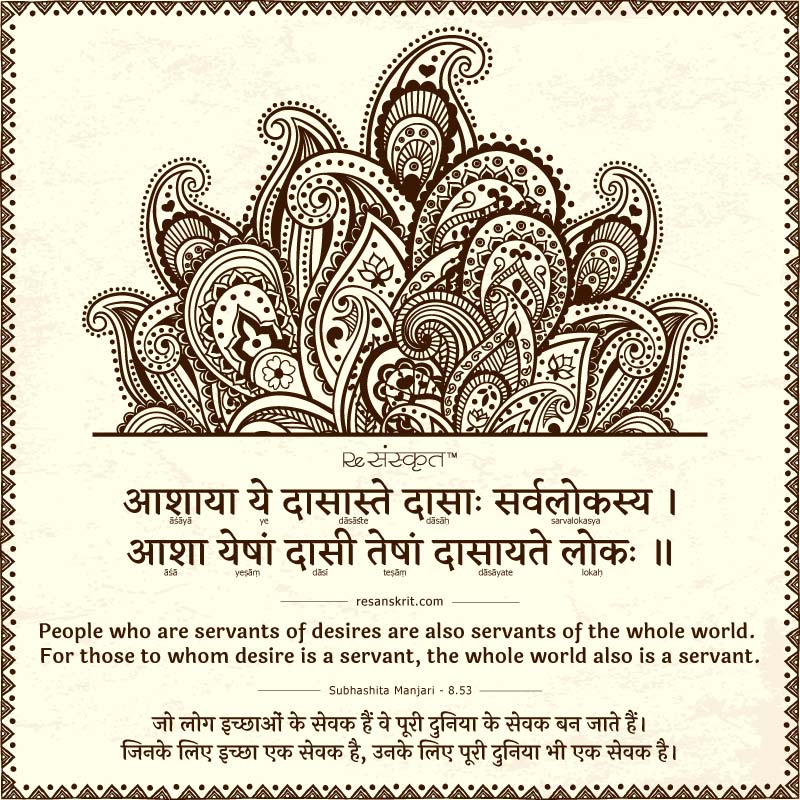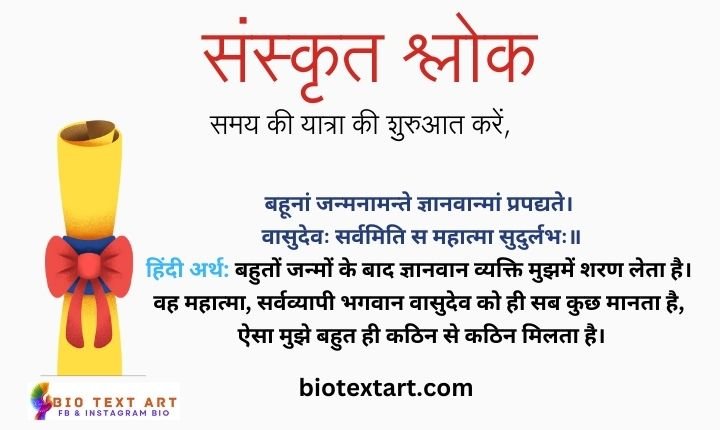Sanskrit Shlok with Meaning
Sanskrit, the ancient language of India, has long been revered for its depth, complexity, and poetic beauty. One of the most captivating aspects of this language is the Sanskrit shlok, a intricate verse that encapsulates profound wisdom, timeless insights, and the essence of the human experience. In this article, we will delve into the world of Sanskrit shloks, exploring their meanings, significance, and the timeless lessons they impart.
The Significance of Sanskrit Shloks

Sanskrit shloks are more than just poetic verses; they are repositories of ancient knowledge, spiritual teachings, and philosophical contemplations. These concise yet powerful lines of text have the ability to transport the reader to realms of deeper understanding, offering a glimpse into the rich tapestry of Indian culture and its enduring traditions.
The Elegance of Sanskrit Shlok Structure
Sanskrit shloks are structured with meticulous attention to detail, each word and syllable carefully selected to create a harmonious and rhythmic flow. The shlok’s composition adheres to strict metrical patterns, known as “Chandas,” which add to the overall aesthetic and musical quality of the verse. This structured approach to language not only enhances the beauty of the shlok but also serves to aid in memorization, as these verses were often passed down orally through generations.
The Multifaceted Meanings of Sanskrit Shloks
One of the most remarkable aspects of Sanskrit shloks is their ability to convey multiple layers of meaning. Each shlok is imbued with a depth of symbolism, metaphor, and philosophical significance that can be unpacked and explored from various perspectives. This richness of meaning allows the shlok to resonate with readers on a profound level, offering insights that can be applied to various aspects of life.
Exploring the Wisdom of Renowned Sanskrit Shloks

Throughout the vast literary traditions of India, numerous Sanskrit shloks have emerged as beacons of wisdom, captivating the hearts and minds of readers across the ages. Let us delve into the meaning and significance of some of the most renowned and revered Sanskrit shloks.
The Bhagavad Gita: A Treasure Trove of Shloks
The Bhagavad Gita, considered one of the most important Hindu scriptures, is a veritable treasure trove of profound Sanskrit shloks. These verses, spoken by Lord Krishna to the warrior Arjuna, offer a wealth of spiritual and philosophical guidance on topics such as duty, detachment, and the nature of the self.
One of the most well-known shloks from the Bhagavad Gita is:
“Anityam asukham lokam imam prapya bhajasva mām” This shlok translates to: “This world is impermanent and full of sorrow. Having attained this, you should worship me.”
This shlok reminds us of the fleeting nature of the material world and the importance of cultivating a spiritual connection with the divine. It encourages us to recognize the impermanence of worldly pleasures and to instead focus our attention on the eternal and the sacred.
The Upanishads: Unveiling the Mysteries of the Self
The Upanishads, a collection of ancient philosophical texts, are renowned for their profound and captivating shloks that delve into the nature of the self, the cosmos, and the ultimate reality. One such shlok from the Katha Upanishad reads:
“Nāyam ātmā pravacanena labhyo, na medhayā na bahunā śrutena. Yamevaiṣa vṛṇute tena labhyas, tasyaiṣa ātmā vivṛṇute tanūm svām.”
This shlok translates to: “The self cannot be attained by instruction, nor by intellect, nor by much learning. It is attained by the one whom it chooses. To such a one, the self reveals its own form.”
This shlok speaks to the idea that the true nature of the self, or the Atman, cannot be grasped through mere intellectual pursuit or acquisition of knowledge. Rather, it is through the grace of the divine, and the individual’s own spiritual preparedness, that the mysteries of the self can be unveiled and experienced.
The Vedas: The Fountainhead of Vedic Wisdom
The Vedas, considered the foundational scriptures of Hinduism, are replete with shloks that encapsulate the vast and profound wisdom of the Vedic tradition. One such shlok from the Rig Veda reads:
“Ekam sad vipra bahudha vadanti” This shlok translates to: “The truth is one, the wise call it by various names.”
This shlok speaks to the universality of truth and the diversity of spiritual traditions, reminding us that the ultimate reality is one, even though it may be expressed and understood in different ways. This shlok encourages an attitude of openness, respect, and acceptance towards diverse spiritual perspectives.
The Relevance of Sanskrit Shloks in the Modern Era

In the fast-paced, ever-changing world of the 21st century, the timeless wisdom contained within Sanskrit shloks remains highly relevant and applicable. These ancient verses offer a counterbalance to the often-overwhelming pace of modern life, providing a means to reconnect with the deeper truths and enduring values that underpin the human experience.
Fostering Mindfulness and Introspection
Many Sanskrit shloks are dedicated to the cultivation of mindfulness, self-reflection, and inner peace. By contemplating the messages and insights within these verses, individuals can cultivate a greater sense of awareness, presence, and emotional balance in their daily lives. This ability to pause, reflect, and reconnect with the deeper aspects of the self can be a powerful antidote to the stresses and distractions of the modern world.
Preserving Cultural Heritage and Traditions
The study and recitation of Sanskrit shloks serve as a means of preserving the rich cultural heritage and traditions of India. By engaging with these ancient verses, individuals can deepen their understanding and appreciation of the wisdom and philosophical underpinnings that have shaped the Indian subcontinent’s vibrant and diverse spiritual landscape. This cultural preservation not only honors the past but also serves to inspire and guide future generations.
Bridging the Divide Between East and West
In an increasingly globalized world, the study and appreciation of Sanskrit shloks can serve as a bridge between the Eastern and Western philosophical and spiritual traditions. As individuals from diverse backgrounds engage with these ancient verses, they can gain a deeper understanding of the commonalities and shared insights that exist across cultures, fostering greater cross-cultural dialogue, and mutual respect.
Frequently Asked Questions

1. What is the significance of Sanskrit shloks?
Sanskrit shloks are significant because they are repositories of ancient wisdom, spiritual teachings, and philosophical contemplations. They are structured with meticulous attention to detail, using strict metrical patterns and rhythmic flow to convey multiple layers of meaning. Sanskrit shloks offer profound insights that can be applied to various aspects of life, making them highly relevant even in the modern era.
2. How are Sanskrit shloks structured?
Sanskrit shloks are structured with a focus on metrical patterns, known as “Chandas.” Each shlok adheres to a specific rhythmic and syllabic structure, which adds to the overall aesthetic and musical quality of the verse. This structured approach not only enhances the beauty of the shlok but also aids in memorization, as these verses were often passed down orally through generations.
3. What are some examples of renowned Sanskrit shloks?
Some renowned examples of Sanskrit shloks include:
- “Anityam asukham lokam imam prapya bhajasva mām” from the Bhagavad Gita, which reminds us of the impermanence of the material world and the importance of cultivating a spiritual connection.
- “Nāyam ātmā pravacanena labhyo, na medhayā na bahunā śrutena” from the Katha Upanishad, which speaks to the idea that the true nature of the self cannot be grasped through mere intellectual pursuit.
- “Ekam sad vipra bahudha vadanti” from the Rig Veda, which highlights the universality of truth and the diversity of spiritual traditions.
4. How are Sanskrit shloks relevant in the modern era?
Sanskrit shloks remain highly relevant in the modern era for several reasons:
- They foster mindfulness and introspection, providing a counterbalance to the fast-paced, distracting nature of modern life.
- They serve as a means of preserving cultural heritage and traditions, honoring the wisdom and philosophical underpinnings that have shaped the Indian subcontinent.
- They can bridge the divide between Eastern and Western philosophical and spiritual traditions, fostering greater cross-cultural dialogue and mutual understanding.
5. How can one study and appreciate Sanskrit shloks?
To study and appreciate Sanskrit shloks, one can:
- Engage with translations and commentaries on ancient Sanskrit texts, such as the Bhagavad Gita, Upanishads, and Vedas.
- Attend lectures, workshops, or classes on Sanskrit language and literature, which can provide deeper insights into the structure, meaning, and significance of these verses.
- Practice reciting and memorizing Sanskrit shloks, as the act of engaging with the language can deepen one’s appreciation for its beauty and complexity.
- Reflect on the teachings and philosophical insights conveyed in the shloks, and explore how they can be applied to one’s own life and spiritual journey.
Conclusion

Sanskrit shloks are a profound and captivating aspect of India’s rich cultural heritage. These intricate verses, with their meticulously structured compositions and multilayered meanings, offer a glimpse into the depth and wisdom of the Vedic tradition. By engaging with these ancient verses, we can cultivate a greater sense of mindfulness, preserve cultural legacies, and foster cross-cultural understanding – all while nurturing a deeper connection with the timeless truths that underpin the human experience. As we continue to navigate the complexities of the modern world, the wisdom and timeless insights of Sanskrit shloks remain ever-relevant, guiding us towards a more meaningful and fulfilling existence.
